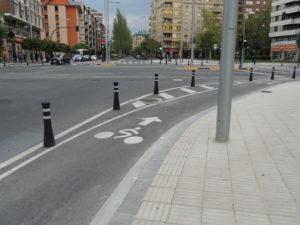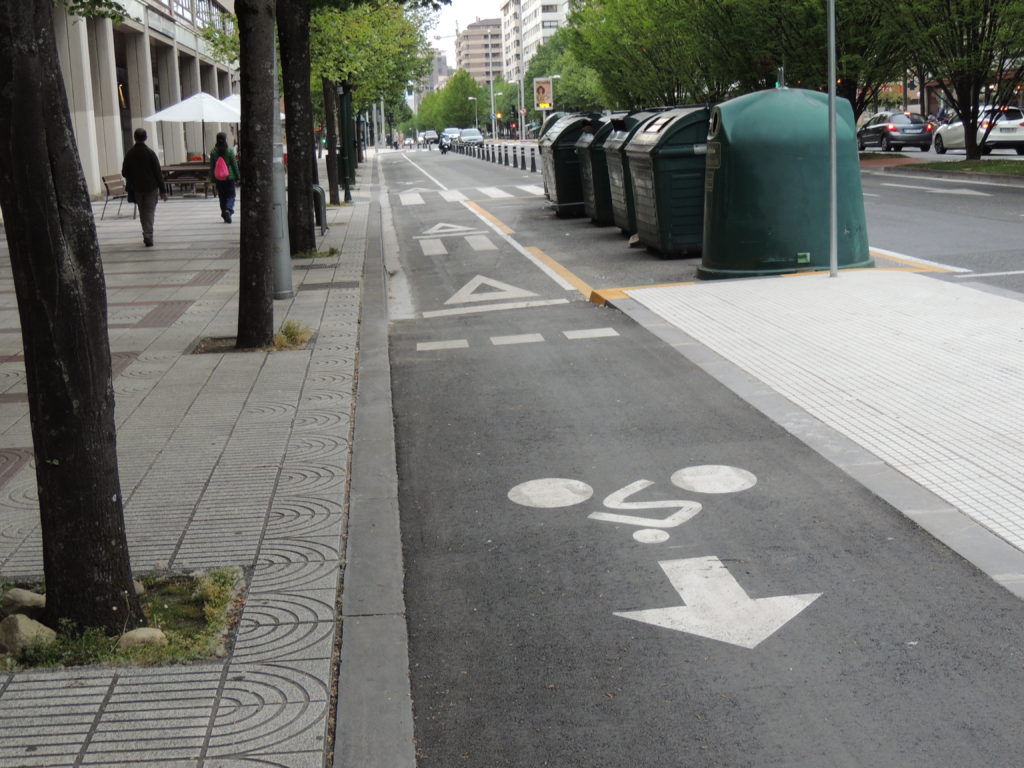Monthly Archives: April 2020
Separators
Separators in bike lines are needed in some complicated roads, specially those which suffer from excessive car traffic or in which cars circulate at illegal speeds. They constitute a safety element to protect cyclists and give a clear message to drivers: You must not cross this line. Easy and direct. There are a myriad of separators in urban biking ranging from different colors and shapes to incorporated issues. In the following example from Pamplona, they integrate reflective elements (the gray stripes) so that drivers see them even in a close night. The distance between two separators was not chosen so by chance. Technicians optimized it to avoid cars intrusion into the bike line and create the psychological effect like “do not trespass this line” in the driver mind. Besides, their height improves this point in contrast to the ground level separators which can go unnoticed by car drivers.
The Innovative Way Ghent Removed Cars From The City
Cycling in the rain (Tilburg, NL)
Pamplona bike line
Pamplona is one of those cities in the north of Spain full of trees and vegetables thanks to the raining weather they enjoy. Pamplona is also a good place to ride. It has experienced a urban bike development in recent years, partially because of the new bike infrastructures. Here you can see one of these examples:
A bike line in an avenue is shown in the picture. It follows the exact sketch as the car lines, but additional elements are presented. Zebra crossings indicate bikers the pedestrian priority to cross the avenue, go to the trash cans or access the bus stop (the begging starts at the right of the image). Moreover, this effect is reinforced by the yield symbols. These double signals establish without any doubts who has right of way here. Furthermore, the arrow with the bike indicates the direction of travel. By the way, there is a second, one-way bike line opposite to the aforementioned one since this is a two-way avenue. Finally, beyond the trash cans, you can see an open surface which was a car line in the past. Thanks to the urban transformation, pedestrians gain space.
To sum up, intelligent bike infrastructures separate spaces for bikes, pedestrians and the rest of ways of transportation.

